Strategy for Business Solutions: Part 1 — The Policy Charter
Excerpted with permission from Building Business Solutions: Business Analysis with Business Rules, by Ronald G. Ross with Gladys S.W. Lam, An IIBA® Sponsored Handbook, Business Rule Solutions, LLC, October 2011, 304 pp. URL:. http://www.brsolutions.com/bbs
Your business solution and the business system(s) that will support it need to be based on a strategy. The strategy will precipitate many business rules.
The key word in understanding strategy is motivation. Sound strategy has to be based on strong motivation.
Motivation is simply why we do what we do. For a business solution, motivation involves establishing ends the business wants to achieve, business goals in particular, and the appropriate means to achieve those ends. Included among the means are business tactics and business policies, which play the central role in mitigating business risks.
A conversation about the elements (ends and means) of strategy is exactly the conversation that business leads are looking to have. It is how Business Analysts can ensure they're talking about what's really important for the business. It's about how Business Analysts can get quality time and quality insight from the business leads.
A Policy Charter is the deliverable in our approach that presents the complete strategy for the business solution in a trim, easy-to-digest form, including the motivation (the why) for each element. The approach is easy to understand and provides a powerful thinking tool.
The Battle Plan for the Business Solution We often think of a Policy Charter as a 'battle plan'. You don't want the troops storming the beaches until you've adequately assessed operational feasibility, identified significant risks, and chosen the best means to minimize those risks. If the battle plan were to fail, the costs could be painfully high. If the battle plan is deemed too risky, you can assess other opportunities. The top brass (read business sponsors) are quite busy, so you want to take as little of their time as possible. They nonetheless need to grasp the plan fully and 'own' it. And, by the way, after all is said and done it also wouldn't hurt if you got a promotion as a result of the plan's success. |
Here's a comment we receive time and time again: "Our organization does develop strategies for business solutions but we've never done it in a structured, pinpoint fashion like this." Structure is exactly what's been missing.
Why It's Called a Policy Charter A key element in well-developed business strategy is business policies. You can think of business policies as business rules in the making. Not just any business rules, but core business rules that are make-or-break for the business success of the strategy. The name Policy Charter emphasizes the special role of these business policies. The content is laid out in a format that highlights that role. |
Creating the Strategy
Business strategy is about knowing where you will play and how you will win. The five essential questions in Figure 1 provide a structured approach for creating a winning strategy.
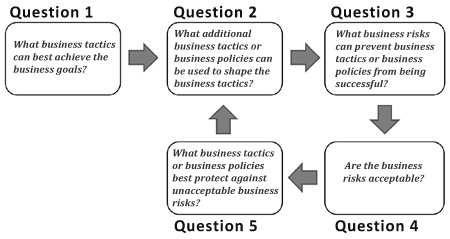
Figure 1. Five Questions for Creating a Winning Strategy
These five questions touch on the four key elements of strategy in a Policy Charter: business goals, business tactics, business policies, and business risks. Business goals are explored in depth in Part 2 of this series. Well-considered business goals are essential in developing a winning strategy.
The other three elements of strategy are discussed below. Elements of all four kinds will be woven into a coherent structure that is self-explanatory with respect to motivation.
Strategy Has Inherent Structure Many people think of strategy as ideas and plans without much structure. Not so. Strategy has inherent structure based on ends and means. The structure is easy to understand and provides both business leads and Business Analysts with a powerful thinking tool. The why question of the Zachman Architecture Framework[1] concerns motivation and strategy. The generic model it gives for answering the why question is ends-means-ends. What ends will you try to achieve? What means will you employ to achieve those ends? This structure is bare-bones, pinpoint, and very business-friendly. It forms the heart of the Business Motivation Model,[2] the industry standard for organizing business strategy. |
Question 1. What Business Tactics Can Best Achieve the Business Goals?
A business tactic is a means that involves some particular characteristic(s), feature(s), or use(s) of one or more items within architectural scope. A business tactic gives some initial form, fit, or function for the scope item(s) as needed for the business solution.
The easiest way to think about a business tactic is as a course of action that can be followed to meet some business goal(s). A course of action has no steps or sequence; it's just a first, brief description of some element of a business solution.
A pizza business, for example, might have the business tactic Deliver pizzas to the customer's home or office. This business tactic addresses the business goal To keep customers satisfied. This motivation connection is illustrated in Figure 2.

Figure 2. Graphical Depiction of Business Tactic Addressing a Business Goal
As Figure 2 suggests, we usually prefer to present the elements of a strategy graphically. Strategy diagrams are friendly and self-explanatory. They are always oriented vertically, rather than horizontally, to avoid any suggestion of flow or sequence (as in a model of business process). Strategy diagrams always portray only motivation connections.
Question 2. What Additional Business Tactics or Business Policies Can Be Used to Shape the Business Tactics?
A business policy is guidance representing a critical do or don't in day-to-day operation of the to-be business solution. A business policy always indicates some degree of operational freedom (usually some reduction) appropriate to meet business goals.
Here is an example of a business policy for a pizza business: Pizzas should be delivered within one hour. In the pizza business this business policy (illustrated in Figure 3) indicates the degree of freedom appropriate to meet business goals.
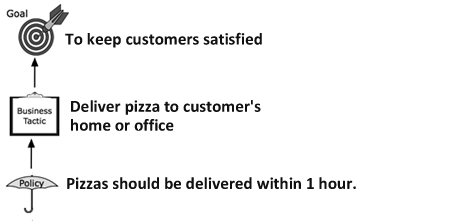
Figure 3. A Business Policy Indicating a Degree of Freedom to Shape a Business
Business Policy vs. Business Tactic The key question for distinguishing business policies from business tactics: Does it touch on some tangible degree of operational freedom? Example: Keep prices competitive. This item is a business tactic because the range of ‘competitive’ prices is huge. What’s ‘competitive’ is completely subject to interpretation. Contrast that expression with the business policy: Prices should be kept lower than the competition’s. This expression clearly indicates a tangible reduction of operational freedom, lower than the competition’s. Provide customer-friendly service. This item is a business tactic because what qualifies as ‘customer-friendly’ is again completely subject to interpretation. Opinions could vary widely. Contrast that expression with the business policy: Delivery personnel should wear uniforms. This expression clearly indicates a tangible reduction of operational freedom. |
Question 3. What Business Risks Can Prevent Business Tactics or Business Policies from Being Successful?
Risks of course are everywhere you look — business risks, project risks, IT risks, professional risks, and more. Which kinds of risks should you consider in creating a strategy? Let's be very clear on this point: Not project risks.
Business Risks vs. Project Risks Business risks and project risks are completely distinct. As an example, suppose a business capability for a large bank has the business mission:[3] To offer a retirement savings plan product to customers of all ages. Business risks must be addressed continuously in the day-to-day operation of the to-be business capability. Examples: Early withdrawal of funds. Loss of customer involvement. Low return in the early years. A project is about developing a to-be business capability — that is, bringing about change within the organization. Project risks represent impediments or barriers to achieving those changes successfully. Examples: In-house resources might be inadequate for putting together an experienced and highly skilled team. The database administrator is currently involved in 20 projects and might not be available when needed. |
A business risk is an exposure arising in day-to-day business activity that can:
- Preclude or complicate satisfaction of some business goal(s).
- Imperil or subvert one or more business tactics or business policies.
Such exposure can arise either from inadequate internal resources or external factors beyond the control of the endeavor. For each business tactic and business policy we ask: What could prevent this means from producing the desired effects?
The pizza business has the business goal To keep customers satisfied. Hungry customers will clearly not be satisfied if pizzas take too long to arrive. Taking too long represents a business risk. Mitigating this business risk is the purpose of the business policy Pizzas should be delivered within one hour.
Then we should ask: What could prevent pizzas from being delivered within one hour in day-to-day operation of the to-be business capability? Traffic congestion during rush hours certainly could (and, unfortunately, has where I live!). So as illustrated by Figure 4 traffic congestion is a business risk that imperils the business policy about one-hour delivery.
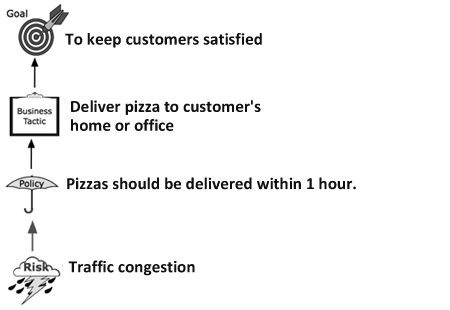
Figure 4. A Business Risk for One-Hour Pizza Delivery
Question 4. Are the Business Risks Acceptable?
When Gladys was a child, her grandfather taught her always to think through risks. When you want to take on something big, he said, think of every risk you can and how you would handle it. Only when you have decided you can live with all remaining risks should you actually do whatever it is. All the remaining risks must be acceptable to you.
What Business Risks are Unacceptable? In our experience, business leads usually have very good intuition about whether a business risk is acceptable. If not, the sponsor(s) do. In case the team does get stuck, however, here are questions to ask:
|
Question 5. What Business Tactics or Business Policies Best Protect Against Unacceptable Business Risks?
What (within our power) can be done to address an unacceptable business risk?
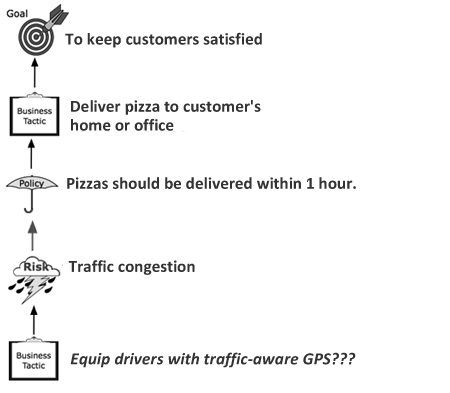
Figure 5. Drill-Down to Equip Drivers with Traffic-Aware GPS
For the pizza business, one suggestion might be the business tactic Equip drivers with traffic-aware GPS. That way drivers can avoid areas of heavy congestion. The business leads will want to discuss the idea. The strategy diagram in Figure 5 graphically depicts the drill-down.
Is the proposed business tactic Equip drivers with traffic-aware GPS a good one to address the business risk Traffic congestion? Is it economically feasible for a pizza business? Does it engender too much risk (e.g., distracted drivers, theft, etc.)? The business leads must decide.
You have two options if the business leads can't resolve an issue: Kick it up to the sponsor(s) or task a Business Analyst (or other staff) to go do some digging.
Another important point: Traffic-aware GPS was probably not originally identified as within scope. So if deemed acceptable, architectural scope needs to be adjusted right away. By exploring the business means to achieve desired ends, the Policy Charter helps solidify architectural scope deftly and rapidly. It works!
Gob-Smacked: Case Study
In the U.K. a large pharmaceutical company sought to integrate four lines of business that had previously been stovepipes. At the same time they wanted to open a new channel for their offerings via the web. Very complicated stuff, with delicate business trade-offs to consider. They asked us to conduct facilitated Policy Charter sessions.
On Monday morning, the room filled quickly with more and more people — about triple the number expected. As the meeting progressed we found out why. The various business managers from the four lines of business had brought their operational staff. The managers had become accustomed to IT requirements sessions asking questions only their operational staff could answer.
At the end of the first day's session, the managers told their operational staff not to come back the next day. The managers caught on quickly what the discussion was about and that they themselves needed to participate.
During Policy Charter sessions, we like to use different colored sticky notes on the walls for each component of strategy — that is, different colors for business goals, business tactics, business risks, and business policies. We use red or pink for the risks so they stand out.
It startled us a bit when we entered the room the next morning and all we could see was seemingly a sea of red, all these risks bleeding out of the walls. Gladys shook her head and walked out of the room to get some coffee. The project manager ran after her and said, "Gladys, this is good stuff!" Gladys gave him a look like, 'Were you in the same room I was?!'
The feedback from the managers was very positive. The previous day's discussion was simply the first time they'd ever talked through the business risks face-to-face. The project manager said he could already see they were saying many of the same things, just using different words. He turned out to be right. By the end of the second day, the sea of red had shrunk considerably.
The group went on to do some great thinking. Originally the sessions had been planned for three days. They were so pleased with the progress, however, that at the end of the third day they asked us to return the next day for more. Whenever did you ever hear of business managers asking for more time to spend in 'requirements' sessions?!
Several years later we learned that the manager had received a worldwide award for the project. They determined that the project had saved the company some £80 million.
About a month after the sessions, Gladys received an email from one of the manager participants. The very first line said, "We were gob-smacked." Gob-smacked?! What's that?! Had something horrible happened? What had we done?!
She called me immediately to find out what it meant. I didn't know either — not an expression used in North America. After a flurry of emails another Brit finally assured us it was highly complementary. Loosely translated he was simply saying they were blown away by the sessions.
Summary
A Policy Charter comprises four key elements of strategy: business goals, business tactics, business policies, and business risks. Elements of all four kinds can be woven into a compact, coherent structure that is self-explanatory with respect to motivation.
A conversation about strategy is exactly the one your business leads are looking to have. A Policy Charter gets right down to business — literally. It addresses two fundamental questions, two sides of the same coin.
- Looking down from business goals. What are the best business tactics and business policies to achieve the business goals, and how are the associated business risks addressed?
- Looking up toward business goals. What is the business motivation for each of the business tactics and business policies, and why are they appropriate?
In the second Part of this three-part series, we examine business goals in-depth. Well-considered business goals are essential in developing a winning strategy. Business goals are the critical anchor point not only in motivating the other elements of a Policy Charter, but eventually your entire set of business requirements as well.
References
[1] See www.zachman.com![]()
[2] Business Rules Group. [May 2010]. The Business Motivation Model (BMM) ~ Business Governance in a Volatile World (Version 1.4). Available at: http://www.BusinessRulesGroup.org Originally published as Organizing Business Plans ~ The Standard Model for Business Rule Motivation (Nov. 2000). Now an adopted standard of the Object Management Group (OMG). ![]()
[3] Crafting a business mission is discussed in Part 2 of this series. ![]()
# # #
About our Contributor(s):
Online Interactive Training Series
In response to a great many requests, Business Rule Solutions now offers at-a-distance learning options. No travel, no backlogs, no hassles. Same great instructors, but with schedules, content and pricing designed to meet the special needs of busy professionals.



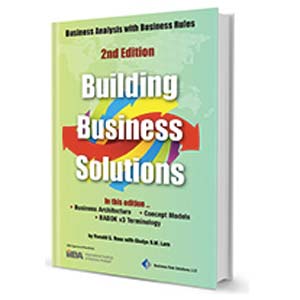







How to Define Business Terms in Plain English: A Primer
How to Use DecisionSpeak™ and Question Charts (Q-Charts™)
Decision Tables - A Primer: How to Use TableSpeak™
Tabulation of Lists in RuleSpeak®: A Primer - Using "The Following" Clause
Business Agility Manifesto
Business Rules Manifesto
Business Motivation Model
Decision Vocabulary
[Download]
[Download]
Semantics of Business Vocabulary and Business Rules